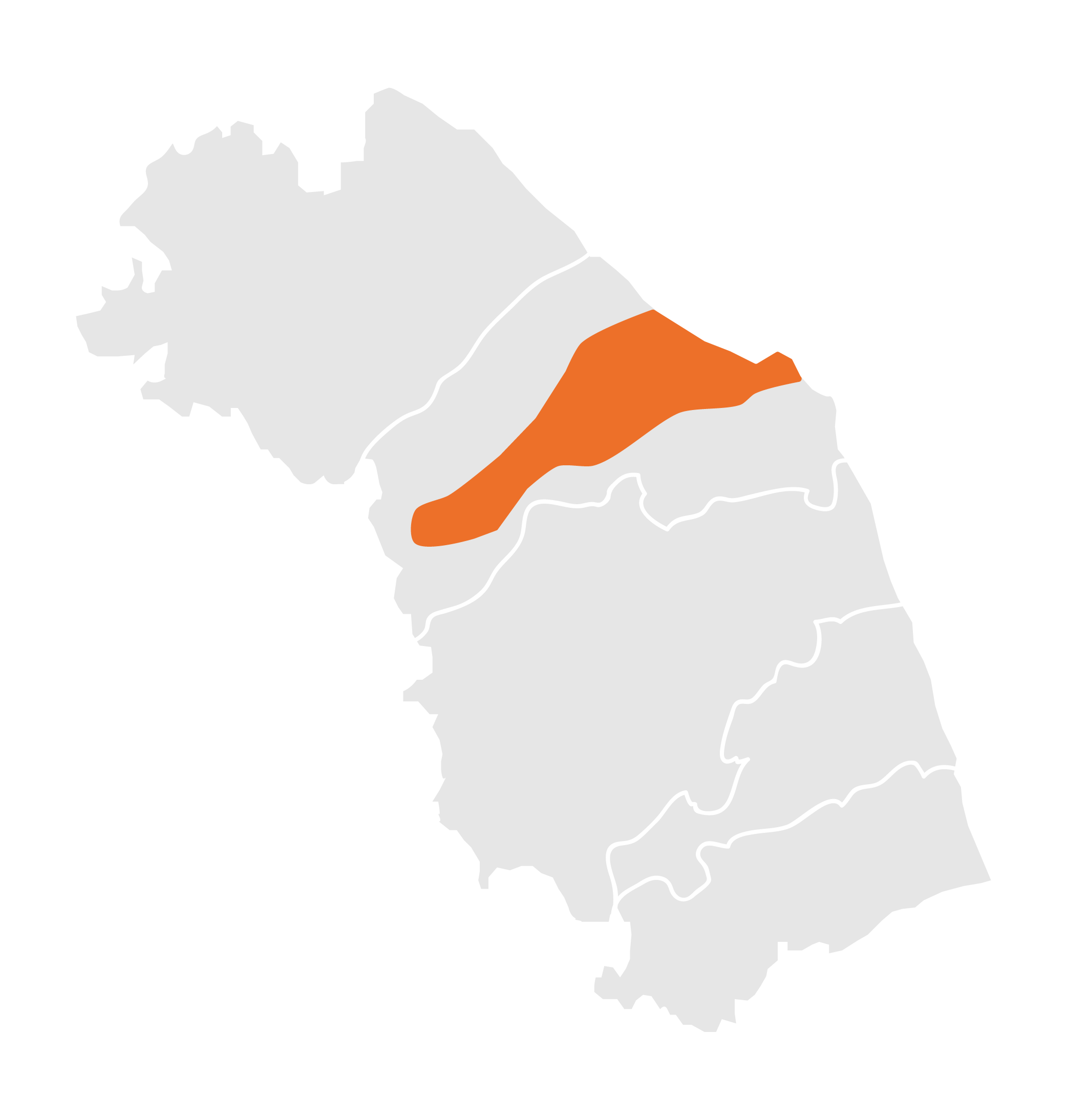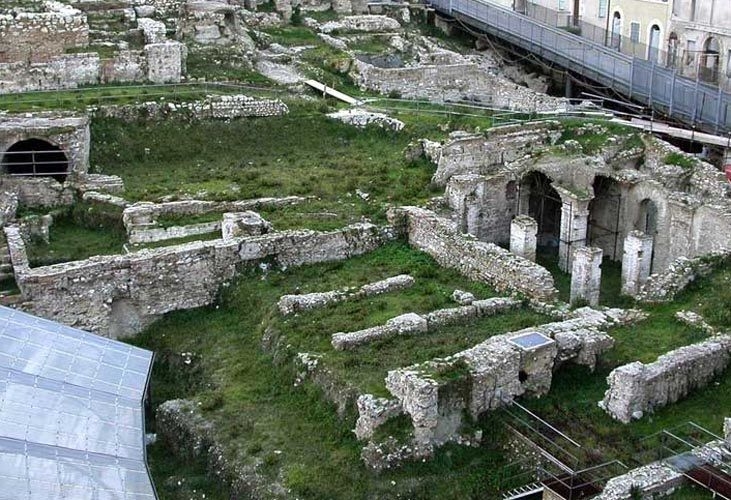
The Roman amphitheater of Ancona was built in the Augustan Age (13 BC-32 AD) in the seat between the Guasco and Cappuccini hills. This particular position allowed making use of the slopes of the two hills for the construction of the cavea, which therefore presents a not perfectly regular morphology. The amphitheater is made up of two different areas: the arena, where the performances took place, and the cavea where the spectators were located. In Ancona, the cavea of the amphitheater was made up of over twenty tiers each arranged in three rows, for a total capacity of about ten thousand spectators. The tiers rested directly on a radial support system, connected by passages and stairs allowing access to each row of seats. Externally there were passages connected to the entrance doors of the structure (vomitoria) by staircases. Considerable lengths of cloth (velarium), supported by wooden poles, protected the spectators from the sun in the hottest hours. In the south-east sector there are the remains of bath-like rooms annexed to the amphitheater: here you can recognize a large frescoed walled area with a mosaic bath and other environments that retain traces of the heating system. With the definitive abandonment of the structure, which took place in the 6th century BC, the amphitheater was first used as a small fort, then as a quarry for the recovery of building materials.
We have found no place to eat in the vicinity
We have found no place to sleep in the vicinity
Da Pesaro a San Benedetto del Tronto, lungo la costa Adriatica, alla scoperta dei principali porti e approdi frequentati dall’età del bronzo a oggi. Alla foce di fiumi e torrenti, entro piccole baie, promontori e grandi insenature, si svilupparono nell’antichità porti, porti canale, empori o semplici approdi. Questi scali furono il fulcro di una fitta rete di commerci marittimi che hanno dato vita a un intenso dialogo tra oriente e occidente, testimoniato dai ritrovamenti di reperti provenienti da tutto il bacino del Mediterraneo.
Nelle zone di confine dell’entroterra marchigiano i principi umbri di Camerino vivevano a contatto con numerosi villaggi, anch’essi retti da principi guerrieri piceni. I pregevoli corredi delle necropoli, risalenti alla fine dell’VIII - inizi VI sec. a.C., documentano i fitti scambi con l’oriente greco e con l’Etruria e attestano il ruolo cruciale di queste popolazioni nei traffici mercantili tra Adriatico e Appennino, che essi controllavano e da cui traevano le loro ricchezze.

|
Address | Piazza Anfiteatro Ancona |

|
Phone Number | 07122832 |

|
Opening Time | Liberamente visitabile da fuori; aperto solo su prenotazione. |

|
Visit Time | 45 min |

|
Entrance Fee | gratuito |

|
Reservation Required | si |

|
Bookshop | no |

|
Free Guided Tour | no |

|
Guided Tour | no |

|
Parking | si, a pagamento |

|
Disabled Accessibility | no |

|
Audioguide | no |

|
Didactic Rooms | no |

|
Conference room | no |

|
English language | no |

|
Public Transport | yes |

|
Family Services | no |



